- Home
- Michael Chabon
Kingdom of Olives and Ash: Writers Confront the Occupation Page 8
Kingdom of Olives and Ash: Writers Confront the Occupation Read online
Page 8
My eyes saw what was before me, but it was so confounding, my mind resisted its credibility.
The question that solidified in my mind was this one: Are the Palestinian people fated to disappear, and does Israel’s interaction with this land inevitably rely on the physical control and consequent disappearance of the Palestinians? Is it true that the state of Israel cannot exist if the state of Palestine does? What does it mean, in our contemporary world, to have a promised land?
Yigal Bronner, a professor at the Hebrew University of Jerusalem, answered it this way: “Susiya against Susya, this is the whole story.”
Cities and Names (1)
The Palestinian village of Susiya, located on a rocky escarpment in the South Hebron Hills, does not look like much. Constructed of light metal, the occasional concrete wall, tarps, and canvas, the village is a ragged collection of homes, sheep pens, water filters and cisterns, and a medical clinic. Sustenance comes from the basic storehouse of what the land makes possible: olives, wheat, barley, cucumbers, tobacco, thyme, tomatoes, and grazing land for herds. Given the harshness of its summer and the desertification of its climate, the South Hebron Hills are emblematic of things perpetually at odds yet bound in coexistence: summer and winter, drought and rain, people and land.
Nasser Najawa’s grandfather was born in the village of Qaryatayn, a few kilometres on the other side of the Green Line. Unable to return to his home after the founding of Israel, his grandfather took the family to Susiya al-Qadim (“Old Susiya,” or Khirbet Susiya), where he continued a life of herding and agriculture. People relied on rainwater caught from the sky via a network of ancient and modern cisterns. They lived below ground, in caverns hollowed out beneath the rocks. These caves stayed remarkably cool in the summer and dry in the winter, and in the harsher months, the herd stayed underground as well.
In 1986, the Israeli government expropriated the land of Susiya al-Qadim, expelling the twenty-five families and demolishing most of the caverns, citing the presence of the ruins of a synagogue, dating from between AD 400 to 700. The government asserted, “There was no historic Palestinian village at the archaeological site there; that the village consists of only a few seasonal residences for a few families; and the land is necessary for the continuation of the archaeological work.” Yet only four years earlier, Plia Albeck, a key Israeli settlement planner who referred to the settlements as “my children,” had surveyed the area and concluded, “There is a formal registration on the land of Khirbet Susiya with the Land Registry, according to which this land, amounting to approximately 3,000 dunam [741 acres] is privately held by many Arab owners. Therefore the area proximal to the synagogue is in all regards privately owned.”
Asked if he believed that the archaeologists were telling the truth, Nasser said, “I am not an expert but yes, I believe it.” He did not mention other discoveries as well: the ruins of an AD 900 mosque and an AD 1100 Byzantine church. These details I learned only later.
Three years before the excavation, in 1983, the Israeli government had given the green light to the settlement of Susya, part of three new settlements in the region. The government pledged 20 million shekels to support fifty to sixty Jewish families. In three months in 1990 alone, Israel restricted Palestinian access to 32,545 acres of land in the West Bank by declaring it miri (“state land”) or part of closed military zones.* (Kiryat Arba, now home to almost eight thousand Jewish settlers, began on land that was confiscated from Palestinians for military use.) In 1991, a Jewish settler shot twelve sheep before turning his M16 on a Palestinian shepherd, Mahmoud al-Nawaja, killing him. Al-Nawaja’s son told a journalist, “The settlement has no border. Every year it spreads, each year it is larger than before.” Two years later, Musa Suliman Abu Sabha, who, according to conflicting reports may or may not have been carrying a grenade, but whom the Israeli army confirmed was “bound hand and foot” at the time of his death, was shot eight times at close range by a settler, Yoram Skolnick.
In 1986, with the arrival of the archaeological park in Susiya, the villagers relocated to their grazing lands. Four years later, in 1990, a second expulsion took place. David Shulman, a professor at the Hebrew University of Jerusalem, and the recipient of a MacArthur fellowship and the Israel Prize, reported that the villagers were loaded onto trucks by the IDF and deposited fifteen kilometres south, at the edge of the desert. Of the villagers, Shulman wrote, “They have hurt nobody. . . . They led peaceful, if somewhat impoverished lives until the settlers came. Since then, there has been no peace. They are tormented, terrified, incredulous. As am I.” Amnesty International reported that 113 tents in Palestinian Susiya were demolished in 1993; and, in 1996, ten inhabited caves were blown up by the IDF.
Nasser grew up in this precarious Susiya. He walked many kilometres, depending on road closures or restricted paths, to attend school each day in the town of Yatta. “I hoped to be like other children,” he recalled, “to have a home and go to school easily.”
After each removal, the villagers of Susiya rebuilt. Their stubbornness must have driven the settlers mad. But the villagers believed they were on the side of right. What did they possess but their own intimacy with the hills in summer and winter, and those seemingly crucial Ottoman land deeds? Those who have precious little will hold fast to what little they have. Israel did not dispute their ownership; rather, the government argued that building on this land, registered for grazing, required permits. That the Palestinians of Susiya had been evicted from their village without compensation, and were in need of shelter, was immaterial.
On the night of July 2, 2001, Yair Har-Sinai, a Jewish guard, described both as a “pacifist” and as a man who “terrorized the Palestinians” was killed in a fight. The killer did not come from Susiya, but the Israeli military carried out a retaliatory action. That night, forty-five or more people from the area, including Nasser, were rounded up. He was a teenager at the time, utterly terrified. After being interrogated all night, he was released in the morning and walked home.
“I could not see anything,” he says. “Everything was demolished. All of my home. Everything. To the ground. The caves. Water cisterns. Everything.” With only women and children present, the men having been detained, bulldozers had drilled through the roofs of the caverns and filled them with rubble; cisterns and wells, livestock pens, and tents were gone.
The loss was unbearable, so too the ensuing anger.
The path Nasser chose would have a lasting impact on the future of Susiya. After the demolitions of 2001, he decided to work with Israeli activists.
Cities and Names (2)
In 1983, Susya, the Israeli settlement, was established next door to the Palestinian village of Susiya. Under international law, the settlement is in violation of the Fourth Geneva Convention, in which an occupying power cannot transfer civilian population to an occupied territory, and is considered illegal. The Israeli government is the only government in the world that disputes this illegality, despite a ruling of the International Court of Justice. In a 2015 report submitted to the Netanyahu government, the settlers’ NGO, Regavim (“Patches of Soil”), a right-wing organization whose stated mission is to “preserve Israel’s national lands,” calculated that Jewish settlers had built 2,026 structures on private Palestinian property. Back in February 2012, Regavim had petitioned the Israeli Supreme Court to expedite the demolition of Palestinian Susiya, claiming that it was an illegal outpost, a petition that is, as of this writing, very much ongoing.
The Israeli government contends that all structures in Palestinian Susiya have been built without permits and are therefore illegal and subject to demolition. The settlers believe that the South Hebron Hills are part of the biblical heartland of Judea and Samaria, a currently “empty area” that belongs to the Jewish state. Yochai Damri, the chairman of the Har Hevron Regional Council, told the UK Independent that it was not the settlers who were newcomers; rather the villagers of Palestinian Susiya had arrived only fifteen years ago. He concluded, “These are c
riminals who invaded an area that doesn’t belong to them.” The surrounding land allocated to Israeli Susya by the government is now ten times the size of the settlement itself.
Driving in the West Bank, along a Route 60 altered to provide a highly modern and convenient highway between the settlements, and along which, for long stretches, Palestinians were once forbidden to travel (funneled instead to a network of narrow roads slowed by detours, checkpoints, and barriers, a system the Israeli government named “the fabric of life”), I find it frankly impossible to remember that I’m in Palestine. When we visited the settlement of Kiryat Arba and were confronted by hostile settlers, a man, who proudly told us he had relocated from France five years ago, cried out to his companion, “Ask her where she thinks she’s standing! Is she in Israel or Palestine? Then you’ll know whose side she’s on.” I did feel then that perhaps I shouldn’t be standing in his park, which contained a memorial celebrating Baruch Goldstein, who in 1994 walked into a place sacred to both Judaism and Islam, the Cave of the Patriarchs (Hebrew), also known as the Sanctuary of Abraham (Arabic), and opened fire in a room that was being used as a mosque, killing 29 Palestinians and wounding 125. I was relieved to depart. The police station here in the settlement of Kiryat Arba is where a Palestinian from the South Hebron Hills must come if she or he wishes to report a crime.
From Route 60, there are two signs, one for Susiya, the archaeological park; and one for Susya, the settlement. There are almost no road signs for the Palestinian villages. Israeli Susya should feel optimistic about its future prospects. The government has offered Palestinian Susiya a piece of land near the boundaries of Yatta (population sixty-four thousand), which would effectively move them into Area A, where more than 90 percent of Palestinians live. I have written earlier about the difficulty of aligning what one reads on a map and what one observes on the land and roads themselves, but there is one important detail in which both suddenly cohere: the highly populated Areas A and B are the cramped spaces of Palestinian life. Home to more than two-and-a-half million Palestinians, and including the cities of Ramallah, Hebron, Bethlehem, Nablus, Yatta, and others, it has been subdivided into 166 separate units that have no territorial contiguity. In other words, they are like shattered glass. Encircling each shard are long lines of Israeli settlements. Where the shape of Palestine, according to the Green Line, once appeared like a broad river, now it is a handful of pools, cut off from one another, slowly evaporating. Palestinian Susiya is a droplet being diverted into the nearest pool.
I spent a night in Palestinian Susiya, gazing up at Israeli Susya. I had some childish idea that, from this holy and beautiful landscape, I would see the immensity of the sky and the blanket of stars. As night fell, I sat on the rocky escarpment with Nasser’s son, Ahmed, who attempted to teach me to count to ten in Arabic. His father scrolled idly on his phone. The two places, Susya and Susiya, are literally one above the other. I could walk uphill and be in Israeli Susya within five minutes. Around us, dogs barked. The voices of women came and went. The evening sun diminished and was gone.
All night, Israeli Susya glowed. Its houses, perimeter roads, and guard stations, connected to the electricity grid, were powerfully, warmly lit. Palestinian Susiya, meanwhile, deemed illegal, was barred from connecting to the power supply. Its electricity came from solar panels donated by a German NGO and installed by an Israeli NGO, its water filters from Ireland, also installed by an Israeli NGO, its medical clinic from Australia, and its school from Spain, resulting in an unlikely cosmopolitanism. Prior to the solar panels, villagers would go to the town of Yatta to charge their phones. The visual contrast was crushing: light above, dark below. The future, the past. Safety, the wild. I couldn’t make out the stars. The sky was too well lit, as if we were on the outskirts of a bustling American town.
I fell asleep reading Calvino by the light of my phone—“It is the desperate moment when we discover that this empire, which had seemed to us the sum of all wonders, is an endless, formless ruin”—and his description of the city of Berenice, whose just and unjust cities germinate secretly, ad infinitum, inside one another: “all the future Berenices are already present in this instant, wrapped one within the other.”
Earlier in the day, when I asked Nasser’s father what he hoped for, the elderly man had answered, “I wish not to be woken in the night to have my home demolished.” Unsurprisingly, I slept fitfully. I curled up as small as I could on my mat, in the room I shared with the elderly man and Nasser’s two small sons. All night, the dogs of Palestinian Susiya howled and barked, as if to warn something off, or as if perplexed by their own existence. My dreams clung to this broken sound. I opened my eyes, exhausted, to the sound of Nasser’s wife, Hiam, going out to tend the chickens and the sheep, and to bake the daily bread in the communal taboon, the earth oven.
I got up. On our knees, we mixed feed for the sheep. My notebook fell into the dirt, fluttering stupidly, and my pen rolled away. My grandparents, too, had been villagers. They fled war and poverty, but my grandfather could not escape, and was executed by Japanese soldiers during the Second World War. My father had been five years old, but he survived this devastation that claimed thirty-six million lives in Asia alone. The things I tried to see here seemed cloaked from my eyes, as if I walked in a hall of mirrors, surrounded by conjoined cities with the same destiny. As the morning wore on, Nasser’s son led me through the chores, including the milking. Ahmed was so full of goodwill and curiosity it broke my heart. Here, he would say, using every bit of English he possessed. Come here. He smiled as I photographed him holding fast to a sheep. Eat, he said to me. He brought me bread, sheep’s milk, a little hummus, an egg. I learned another word, baladi. The taste of the village and the earth.
Above us, the high-wattage security lights of Israeli Susya were dimming. Here, in the other Susiya, the solar panels were not functioning, and there would be no electricity this morning, but in the crisp morning light, everything could be seen. All the invisibilities were laid bare.
Cities and Desire
In 2001, as he stood at the crossroads of his life, Nasser met a small group of Jewish activists who offered solidarity to Susiya. It was confounding: Jewish soldiers were demolishing his home and protecting the settlers, and Jewish individuals were volunteering to work beside him, but Nasser wanted to be neither the target of violence nor the recipient of charity. The questions he asked himself were philosophical: How to exist freely in a place where he was not free? Violent resistance showed him how to die, but what if nonviolence led only to the slow death of capitulation? How could he change his conditions? I thought of sixteen-year-old Wouroud and her searching smile. “I just want to live.” For Nasser, the histories of civil rights movements allowed him to glimpse a possible future.
“I think nonviolent action is the way to change,” he said, as we looked out at his family’s small orchard. “This is the only way.” Injustice persisted, he reasoned, because the world did not know, therefore he would make visible what was happening to them.
The ensuing years of activism led to cooperation with B’Tselem and coordination with other activist groups, including Ta’ayush.* Nasser learned fluent Hebrew and later English. Solidarity work in Susiya became organized, flexible, and creative. Israeli and Palestinian activists are treated unequally before the law, which makes their cooperation all the more potent: Israeli citizens, protected by Israel’s Basic Laws, have civil rights, including freedom of assembly. Israeli citizens can move through all parts of Area C without any restrictions whatsoever; Palestinians are barred from entering vast areas surrounding settlements without prior coordination with the Israeli Civil Administration, even to cultivate their own land.
Volunteers from Ta’ayush began escorting shepherds to their grazing lands. During planting and harvesting windows, they came singly and sometimes en masse. A small but dedicated group of volunteers hoped their presence would forestall settler attacks, but when it didn’t, they documented the encounters and, most impor
tant, put their bodies in the way. The video evidence of violent attacks on shepherds, activists, and Palestinian schoolchildren is horrifying and disturbing—but even video proof did not convince the police to apply the law. Meanwhile, Susiya was mired in a desperate legal battle to save its homes from demolition. Year by year, Nasser’s day-to-day work—with lawyers, activists, and peacemakers—not only strengthened but humanized the ties of Palestinian and Israeli civil society: acts of solidarity became acts of friendship. By 2015, the relentless paper and video documentation by Jewish and Palestinian activists would culminate in stunning international diplomatic and media attention on Susiya, as the village became emblematic of Israel’s policies of land seizure. In June 2015, Israel’s Supreme Court ruled that the Civil Administration had the right to demolish the village. A month later, the Israeli Defense Ministry concluded that Susiya sat on private Palestinian land and that local people had the 1881 Ottoman documents to prove it. Diplomats from twenty-eight European member states traveled to Susiya to protest Israel’s decision, and the US State Department spoke up in Susiya’s defense.*
The conceptual, legal, and physical infrastructure of occupation aims to entrench separation, disaffiliation, and, most profoundly, estrangement. Muslim, Christian, and Jewish descendants of Israel-Palestine, if they come from the same land, will inevitably carry shared physical attributes and cultural norms. Physical separation is key if one population is deemed to have a different destiny than another. Something as innocuous as friendship, therefore, goes against the totality of the barriers, the checkpoints, outposts, ID cards, sterile streets, the “fabric of life,” and the separation wall. Friendship, such a seemingly flimsy thing, seemed almost a joke in a world of continuous violence.

 McSweeney's Mammoth Treasury of Thrilling Tales
McSweeney's Mammoth Treasury of Thrilling Tales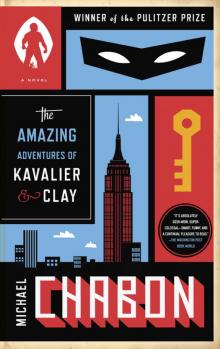 The Amazing Adventures of Kavalier & Clay
The Amazing Adventures of Kavalier & Clay The Yiddish Policemen's Union
The Yiddish Policemen's Union Wonder Boys
Wonder Boys Manhood for Amateurs
Manhood for Amateurs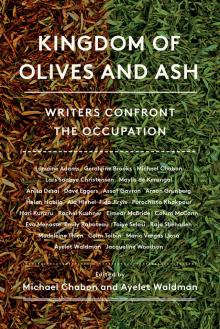 Kingdom of Olives and Ash: Writers Confront the Occupation
Kingdom of Olives and Ash: Writers Confront the Occupation Gentlemen of the Road: A Tale of Adventure
Gentlemen of the Road: A Tale of Adventure A Model World and Other Stories
A Model World and Other Stories Pops: Fatherhood in Pieces
Pops: Fatherhood in Pieces McSweeney's Enchanted Chamber of Astonishing Stories
McSweeney's Enchanted Chamber of Astonishing Stories Summerland
Summerland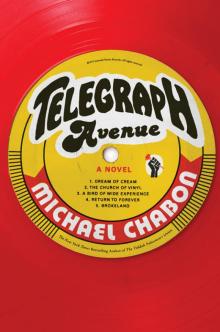 Telegraph Avenue
Telegraph Avenue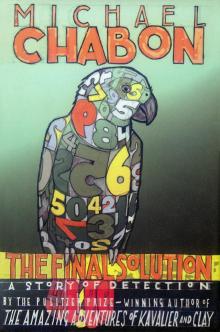 The Final Solution
The Final Solution The Mysteries of Pittsburgh
The Mysteries of Pittsburgh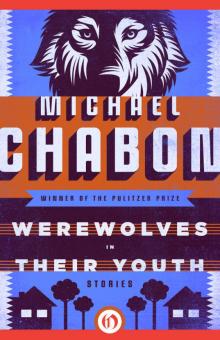 Werewolves in Their Youth
Werewolves in Their Youth Bookends
Bookends Fight of the Century
Fight of the Century Maps and Legends
Maps and Legends The Amazing Adventures of Kavalier & Clay (with bonus content)
The Amazing Adventures of Kavalier & Clay (with bonus content) Kingdom of Olives and Ash
Kingdom of Olives and Ash Pops
Pops Gentlemen of the Road
Gentlemen of the Road The Final Solution: A Story of Detection
The Final Solution: A Story of Detection Telegraph Avenue: A Novel
Telegraph Avenue: A Novel